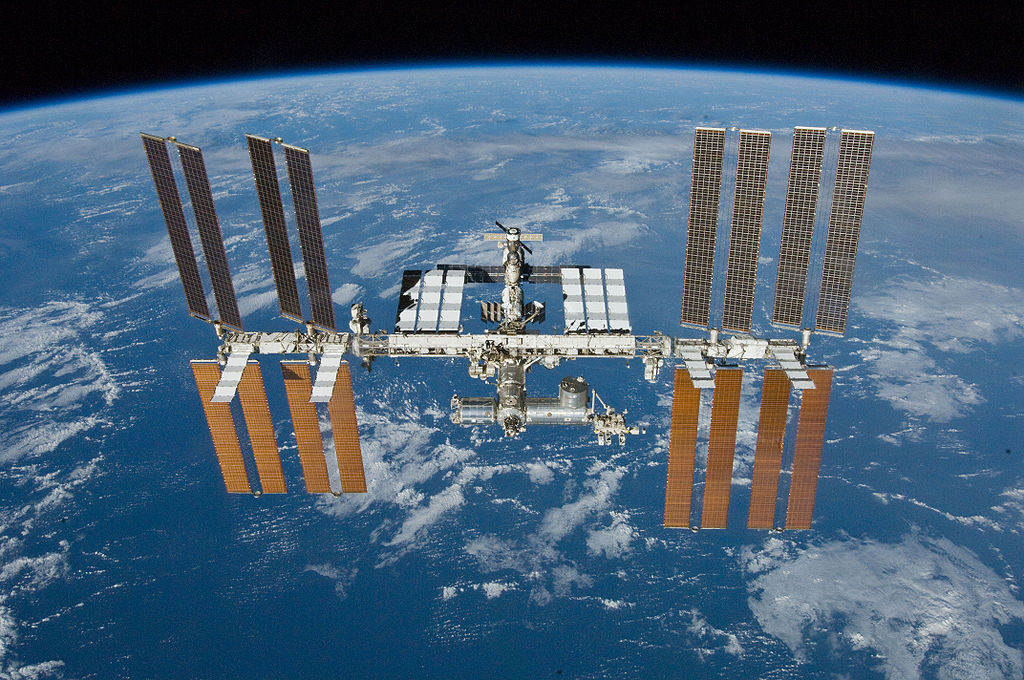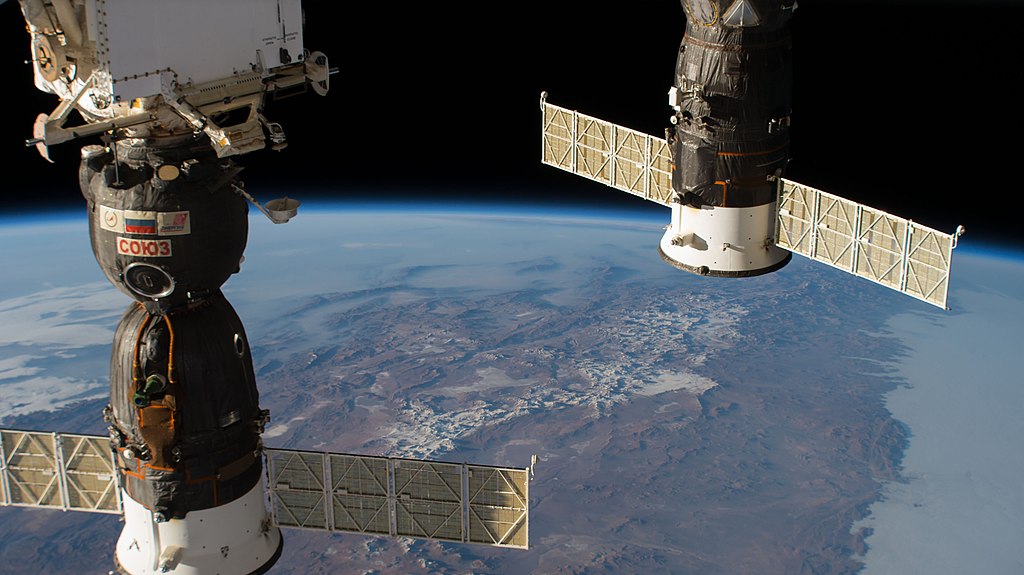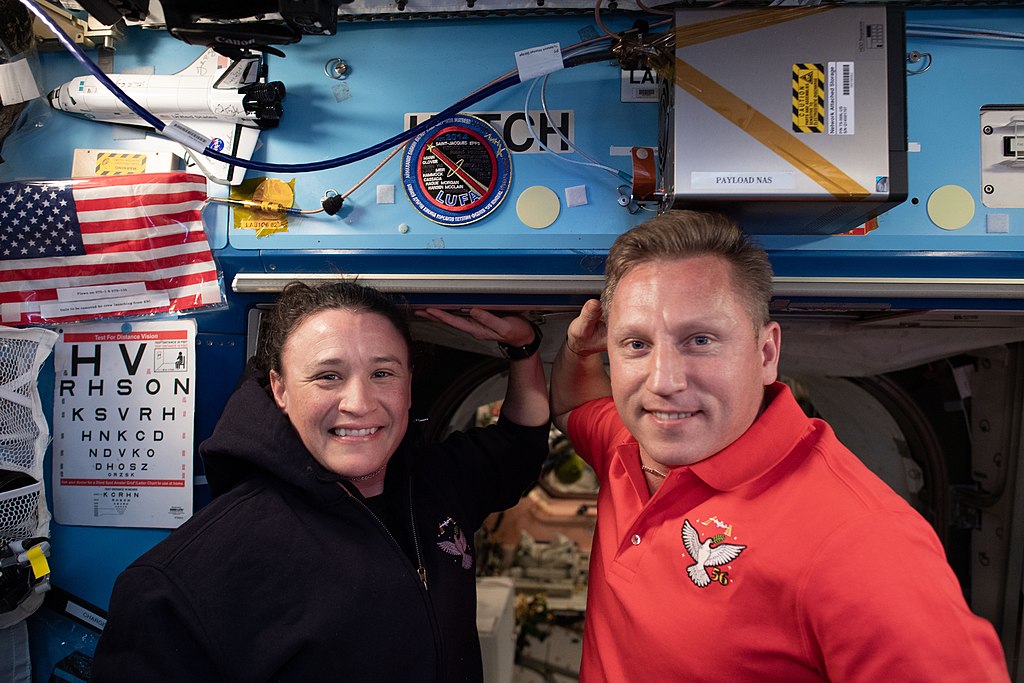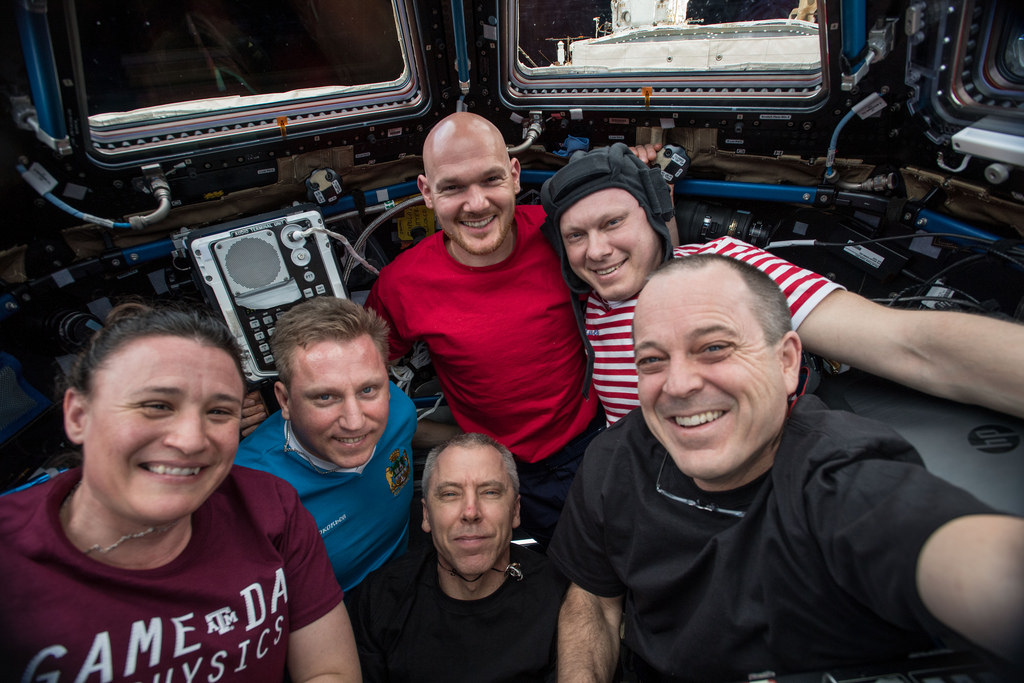Astronauts on the International Space Station (ISS) have patched a small leak in one part of the station. They were able to plug the hole using cloth and special glue.
The ISS is a science laboratory in space. It is made of many different pieces that have been added on slowly since 1998. The project is supported by groups in many different countries, including NASA in the US and Roscosmos in Russia. The group of astronauts working there changes often, but people have been living in the ISS for almost 18 years.

It is made of many different pieces that have been added on since 1998.
People have been living and working in the ISS for almost 18 years.
(Source: NASA, via Wikimedia Commons.)
The station rotates around the Earth, over 200 miles (320 kilometers) above it. The ISS allows scientists to do research in a place with very low gravity. It also allows them to test things that might be used on other trips into space.
On Wednesday, NASA learned that there was a leak in the ISS. The station is full of air that the astronauts can breathe. But outside the ISS, in space, there is no air. That means the pressure inside the station is much higher. So, like a bike tire with a tiny hole in it, a bit of air started leaking out of the ISS.

This is the ship that three of the astronauts came up in.
The Soyuz can still be used to return to Earth.
(Source: NASA, via Wikimedia Commons.)
On Thursday, the astronauts went to work and soon found the leak. It was a very small hole, less than 1/10 of an inch (2 millimeters) wide. That’s about as wide as the lead on a pencil that hasn’t been sharpened. The hole is in a Russian part of the station, called the Soyuz. The Soyuz is the spacecraft that brought three of the astronauts to the ISS. Luckily, the Soyuz can still be used to return to Earth.
The small hole in this picture caused the leak in the ISS.
Some websites had a picture of a hole in a satellite caused by space debris long ago.
Here is a picture of the hole in the Soyuz MS-09BO module (Note: some media outlets have been fooled by the 1984-vintage Solar Max debris hole image that Hadfield tweeted as an example. Don't be like them.) pic.twitter.com/2KrmL8Vz0Z
— Jonathan McDowell (@planet4589) August 31, 2018
When the astronauts first found the leak, German astronaut Alexander Gerst did something that seemed very natural – he covered the hole with his thumb.
Because the hole was so tiny, the astronauts were never in any danger. But it was still important to stop the leak. While they waited for more advice from Earth, the astronauts covered the hole with special tape.

Mr. Prokopyev patched the hole with cloth and special glue.
(Source: NASA, via Wikimedia Commons.)
After many people discussed the problem on the ground, the astronauts were told how to plug the hole. Sergey Prokopyev of Russia did the job, filling the hole with cloth soaked in a special glue.
The repair seems to have worked. The astronauts were able to get the air pressure back to normal. On Friday, the astronauts returned to their regular work.

Serena Auñon-Chancellor, Commander Drew Fuestel and Ricky Arnold from NASA.
Behind them, from left, are Sergey Prokopyev and Oleg Artemyev from Roscosmos.
At the top of the group is Alexander Gerst of the European Space Agency.
(Source: NASA Johnson, via Flickr.com.)
NASA says that the hole was probably made by a tiny bit of a meteorite – a rock flying through space. Some people believe the hole could be from a screw that came loose. It is also possible that the station was hit by a small piece of “space debris” – tiny pieces of trash from other spacecraft. As more and more rockets and satellites are sent into space, space debris is a more common problem.
Did you know…?
The International Space Station goes around the Earth over 15 times each day. It is large enough that you can often spot it with your eyes – no telescope needed.
This site will help you find out when the ISS can be seen passing over your area: spotthestation.nasa.gov
